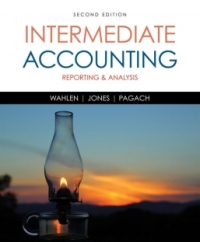Answered step by step
Verified Expert Solution
Question
1 Approved Answer
(20 points) A firms current capital structure is 100% Equity and it has no debt outstanding. The firms beta (unlevered) is 1.10. Further, Free Cash
- (20 points) A firms current capital structure is 100% Equity and it has no debt outstanding. The firms beta (unlevered) is 1.10. Further, Free Cash Flows in the current year was $100 million and this level of free cash flow is expected to continue in perpetuity (growth rate =0%). The current stock price is $37.74 per share with 25 million shares outstanding. The firm tax rate is 34% and the risk-free rate and risk premium are 4% and 6% respectively. Management of the company wants to increase the value of the firm by increasing firm leverage, i.e. taking on debt and using it to replace equity. However, management is not sure what would be the optimal capital structure for the company. They are considering three alternative capital structures, i.e, debt/value of 20%, 30%, or 40%. All relevant information to estimate the optimal capital structure has been provided in the attached Excel Spreadsheet (Sheet Q1).Complete the missing information in the spreadsheet and compute the cost of equity, weighted average cost of capital, firm value, price per share, number of shares repurchased and number of shares outstanding for each of the three-alternative capital structures. Assume the debt raised by the company is to be used solely to repurchase its shares. What is the firms optimal capital structure? Why?
- (60 points) In the attached spreadsheet (Sheet Q2), all relevant information has been provided to conduct a valuation analysis for XYZ Inc. Assume an explicit forecast period of five years and a target growth rate of 5% during the explicit forecast period. Further, assume a long run constant growth rate of 3%. The projected level of debtfor each of the five years of the explicit forecast period has been provided. Complete the missing information in the Excel spreadsheet and estimate the price per share of the company using the: 1) APV Valuation Method, and 2) Flow to Equity Method.
Step by Step Solution
There are 3 Steps involved in it
Step: 1

Get Instant Access to Expert-Tailored Solutions
See step-by-step solutions with expert insights and AI powered tools for academic success
Step: 2

Step: 3

Ace Your Homework with AI
Get the answers you need in no time with our AI-driven, step-by-step assistance
Get Started


